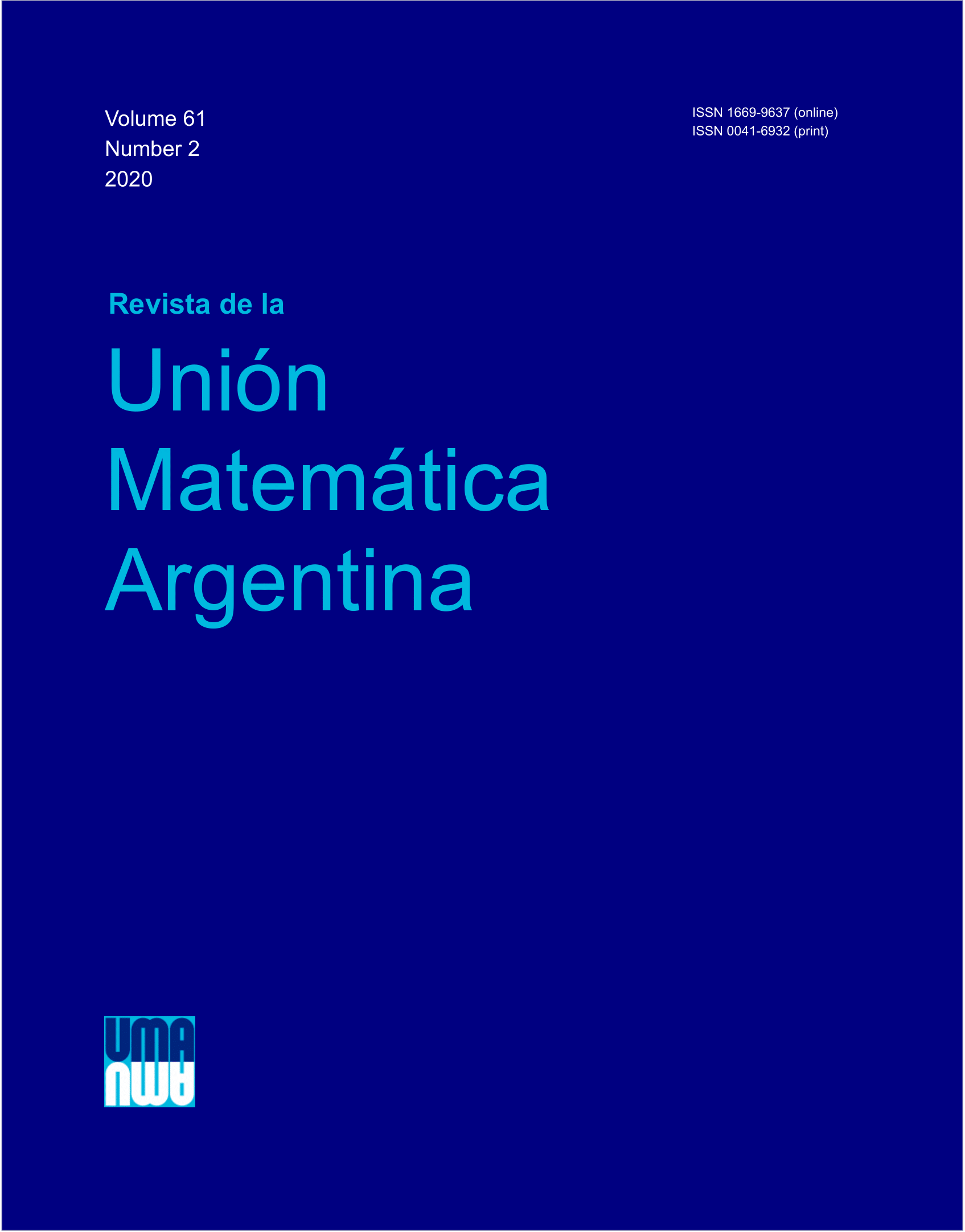Reflexivity of rings via nilpotent elements
DOI:
https://doi.org/10.33044/revuma.v61n2a06Abstract
An ideal $I$ of a ring $R$ is called left N-reflexive if for any $a\in\operatorname{nil}(R)$ and $b\in R$, $aRb \subseteq I$ implies $bRa\subseteq I$, where $\operatorname{nil}(R)$ is the set of all nilpotent elements of $R$. The ring $R$ is called left N-reflexive if the zero ideal is left N-reflexive. We study the properties of left N-reflexive rings and related concepts. Since reflexive rings and reduced rings are left N-reflexive rings, we investigate the sufficient conditions for left N-reflexive rings to be reflexive and reduced. We first consider basic extensions of left N-reflexive rings. For an ideal-symmetric ideal $I$ of a ring $R$, $R/I$ is left N-reflexive. If an ideal $I$ of a ring $R$ is reduced as a ring without identity and $R/I$ is left N-reflexive, then $R$ is left N-reflexive. If $R$ is a quasi-Armendariz ring and the coefficients of any nilpotent polynomial in $R[x]$ are nilpotent in $R$, it is proved that $R$ is left N-reflexive if and only if $R[x]$ is left N-reflexive. We show that the concept of left N-reflexivity is weaker than that of reflexivity and stronger than that of right idempotent reflexivity.
Downloads
Downloads
Published
Issue
Section
License
Copyright (c) 2024 Abdullah Harmanci, Handan Kose, Yosum Kurtulmaz, Burcu Ungor

This work is licensed under a Creative Commons Attribution 4.0 International License.
Authors who publish with this journal agree to the following terms:
Authors retain copyright and grant the journal right of first publication with the work simultaneously licensed under a Creative Commons Attribution License that allows others to share the work with an acknowledgment of the work's authorship and initial publication in this journal. The Journal may retract the paper after publication if clear evidence is found that the findings are unreliable as a result of misconduct or honest error.

